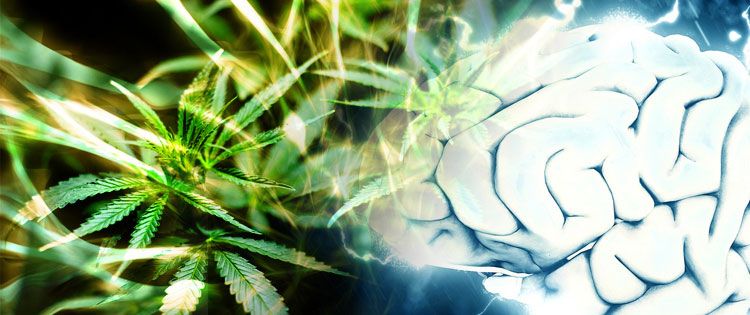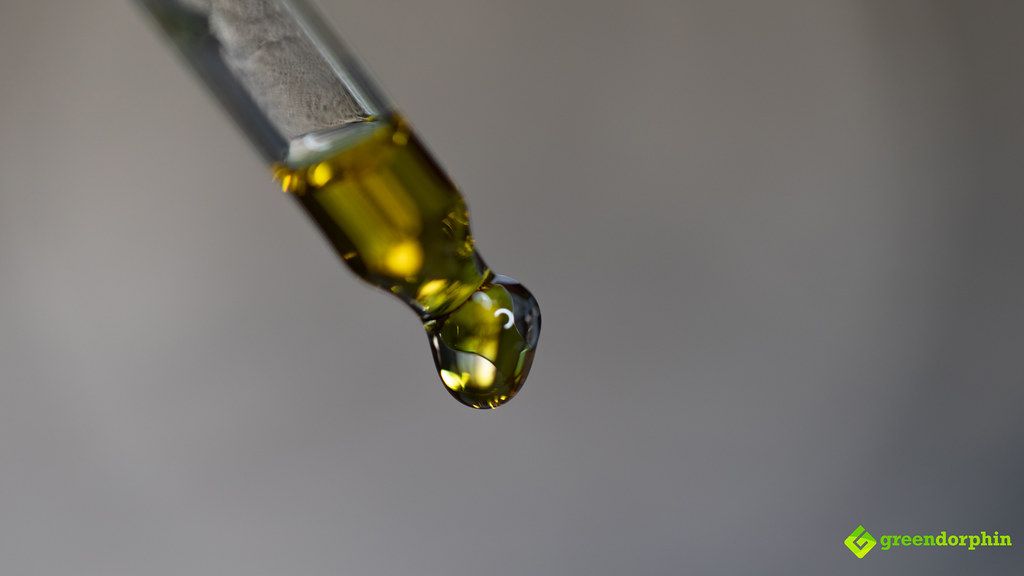CBD — or cannabidiol — is one of 120 cannabinoids found in cannabis plants. While it doesn’t get you high like THC, the other big-hitter among cannabinoids, it has been touted for potential therapeutic effects when treating a variety of health conditions. These include stress, anxiety, pain, inflammation, sleeplessness and nausea, among many other issues.
However, how does it work?
The Endocannabinoid System
Discovered in the 1990s, the Endocannabinoid System (ECS) is a series of cannabinoid receptors found in virtually all tissues in basically all vertebrates — from humans to fish to birds.
Endogenous cannabinoids produced by the body attach to those receptors. THC attaches to one of them. CBD was originally thought to attach to the second, but rather than directly doing so, it is now believed that while attaching to neither, CBD indirectly benefits them.
Essentially, CBD is ingested to provide a boost to the ECS beyond the body’s endogenous cannabinoids.
This is desirable given the ECS’s role in bringing balance to the body’s many systems. Basically, it puts these systems — e.g., cardio-pulmonary, digestive, immune, reproductive, nervous — in the best state to perform their necessary tasks.

CB1 and CB2 Receptors
Two major cannabinoid receptors — there may be a third — have been discovered. CB1 receptors are concentrated in the brain and central nervous systems, influencing mood, memory, coordination, appetite and more. CB2 receptors are associated largely with the immune system and peripheral organs, and impact inflammation and pain.
CBD’s influence over them can be profound. For instance, CBD is believed to weaken the activity of the enzyme known as fatty acid amide hydrolase (FAAH). FAAH breaks down an endogenous cannabinoid, anandamide, known as the “bliss molecule” for its ability to bind to CB1 receptors and positively impact mood, memory, brain function and pain. CBD lets the bliss molecule do its job.
CBD also binds to TRPV-1 receptors. These protein receptors are partially responsible for regulating temperature, pain and inflammation, hence CBD’s popularity as a topical.
How You Take It Matters
Odds are, you are going to consume CBD in one of three ways: orally, through the lungs or topically.
Each has its advantages and disadvantages. This is where you’ll hear the term “bioavailability” thrown around a lot.
Bioavailability means the proportion of CBD that gets to your bloodstream. The range is from around 30% for smoking and vaping to perhaps 6% for edibles.
Oral
This is the most common method. Edibles, oils and tinctures all fall into this category — though oils are also found in topical solutions. CBD taken this way goes through the digestive system then the hepatic portal system to the liver, which metabolizes the CBD for entry into the bloodstream, a process known as the “first-pass effect.” The first-pass effect diminishes the amount of cannabinoids absorbed into the bloodstream.
Edibles
Edibles such as gummies are the least effectively absorbed into the bloodstream. On the other hand, research indicates that the effects produced by edibles, while taking longer to be felt, may last longer once they arrive.

Tinctures
While often packaged similarly, tinctures are not to be confused with oils — though the terms are sometimes, incorrectly, used interchangeably. Tinctures are alcohol-based extracts. Alcohol is used to extract CBD from the cannabis plant and in the finished product, so if you’re avoiding alcohol, avoid tinctures.
To mask the bitterness of a product frequently containing upward of 60% alcohol, tinctures may contain additional sweeteners or other flavors in addition to vitamins and other supplements. An advantage to tinctures is that they are taken under the tongue, so they are quickly and efficiently absorbed. They can also be added to food or drinks for oral ingestion.
Oils
These are a blend of CBD extract and a carrier oil such as coconut oil. Fatty acids effectively bypass the first-pass effect, increasing CBD absorption. They typically take a bit longer than tinctures to have an effect, somewhere in the neighborhood of one to two hours.
Inhalants
Here, we’re taking vaping versus smoking. These delivery methods are fast — with effects coming on in as little as 15 minutes, which is on par with intravenous administration. However, there are differences to consider — namely, fire.
Smoking CBD flower literally burns some of the product you’re trying to ingest, and there are concerns about long-term effects on the lungs.

Vaping — which is to say vaporizing rather than burning — CBD results in no loss of product. However, the jury is still out on pulmonary impact, and poor-quality equipment and products may exacerbate those issues.
Contrary to what many believe, “CBD vape oil” doesn’t contain oil. A better name would be “vape juice,” as CBD made for vaping is usually made with food-grade ingredients. Don’t try to vape a CBD tincture or oil.
Topicals
The skin has several cannabinoid receptors, so CBD topical products are considered effective for targeted relief. Use liberally, as the skin has low permeability and absorption rate is low.
Choose Wisely
Currently, there is only one FDA-approved CBD product, a prescription oil approved for treating two types of epilepsy. In a crowded marketplace of CBD products, quality — and quality control — can vary widely.
CBD can also come with side effects such as dry mouth, diarrhea and fatigue, or interact with other medications (for example, blood thinners).
Generally, though, CBD products are well-tolerated. Where other methods have failed, CBD is an avenue worth exploring.
We hope you have found this post on how the body processes CBD helpful. Let us know if you have any questions in the comments below!
- How the Body Processes CBD - March 18, 2021


